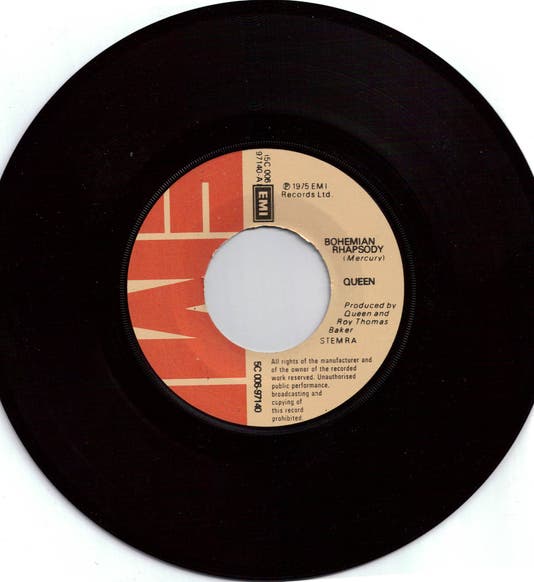Scientist of the Day - Freddie Mercury
It is the day after Labor Day, the end of summer, and we need a change of pace, without neglecting our scientific theme. So today we celebrate Freddie Mercury, lead singer of the rock group Queen, who was born Sep. 5, 1946. On Oct. 10, 1975, Queen released the song "Bohemian Rhapsody", which was written by Mercury. Some ways into the song, after the perplexing chorus, "I see a little silhouetto of a man, Scaramouche, Scaramouche, will you do the fandango," we suddenly encounter the unexpected refrain: "Galileo, Galileo, Galileo, Galileo, Galileo, Figaro." The irony of Galileo’s appearance in a rock song—in this rock song—is that Galileo actually composed a Bohemian rhapsody of his own.
When Galileo first looked at the Moon through his telescope in 1609, he noted one especially large “cavity” near the center of the Moon that he compared (in his book, Sidereus nuncius, 1610) to the appearance of Bohemia on Earth, when viewed from above. You can see the crater, as Galileo depicted it in one of the engravings in Sidereus, in the second image above. Occasionally, scholars have wondered how Galileo knew what Bohemia looked like from the air--he had never even seen it from the ground--until one researcher ran across a map of Germania in the world atlas of Abraham Ortelius (1570). Sure enough, Bohemia is shown there, surrounded by a circular ring of mountains, looking very much like Galileo’s circular cavity. In most copies of the Atlas, Bohemia is colored differently from the rest of Germania, making it stand out even more. We have a 1592 edition of Ortelius in the Library, and we see above the entire engraved map (third image) and a detail of Bohemia (fourth image. Galileo must have seen such a map and was able to recall the crater-like appearance of Bohemia when he beheld his large crater on the Moon.
Having linked Freddie Mercury to an important Galilean discovery, we can now comment that "Bohemian Rhapsody" is one of the great rock anthems of the last century, and it attracted even wider attention when it was featured in the movie Wayne's World in 1992. If you would like to re-acquaint yourself with the song, we might recommend the original Queen music video, which was something of a ground-breaker in its own right (Galileo comes in at about the 3:00 minute mark). Once you have absorbed this, you are ready for The Muppets production of “Bohemian Rhapsody.” For those non-aficionados among you, Freddie is at the keyboard and the solo mike in the original, and, in the Muppets version, is played variously by Gonzo the Great, Rowlf the Dog, and Animal.
Like too many rock stars, Freddie died young; he is memorialized with a dynamic bronze statue in, or all places, Montreux, Switzerland, along the shore of Lake Geneva (fifth image).
Dr. William B. Ashworth, Jr., Consultant for the History of Science, Linda Hall Library and Associate Professor, Department of History, University of Missouri-Kansas City. Comments or corrections are welcome; please direct to ashworthw@umkc.edu.











